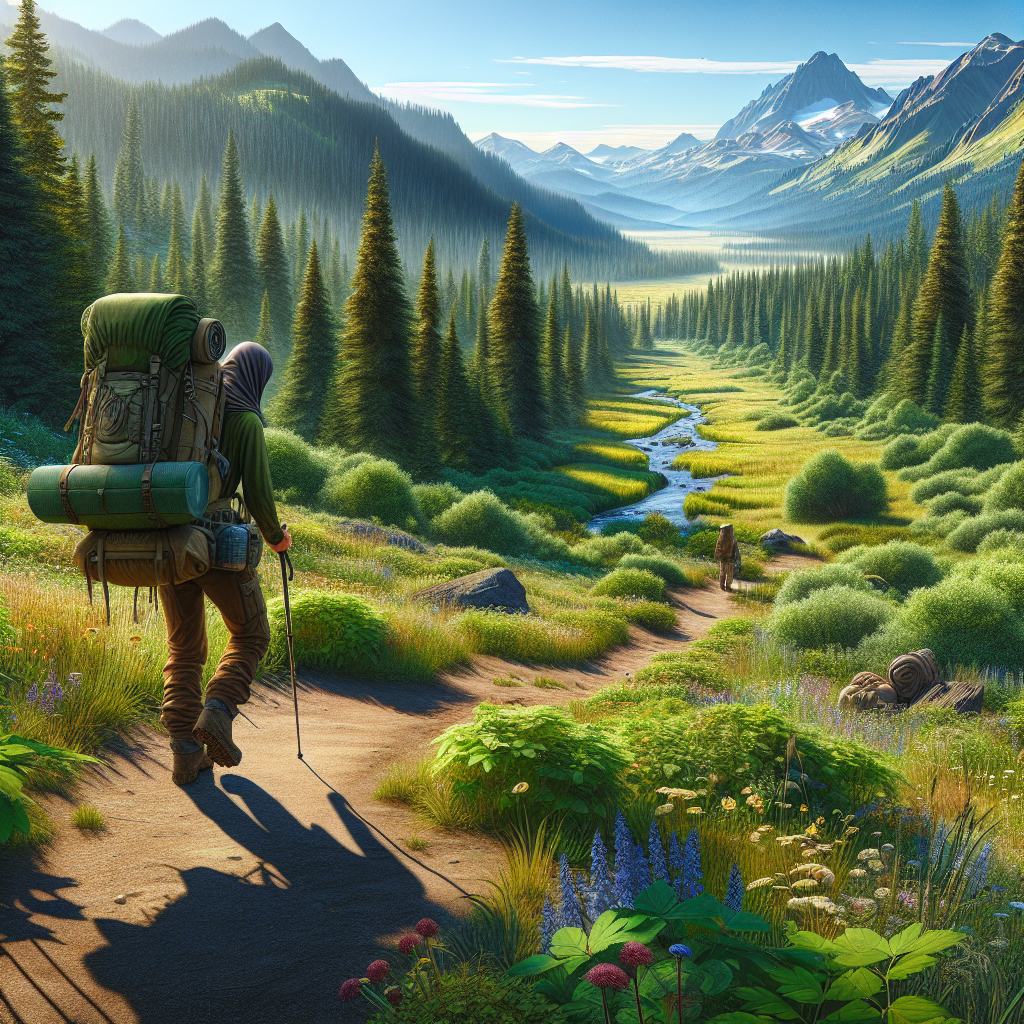Title: The Unseen Guide to Backpacking the Oregon Section of the Pacific Crest Trail
Introduction: Ah, backpacking the Oregon section of the Pacific Crest Trail (PCT), what an adventure! Stretching over 450 miles, rich with magnificent landscapes ranging from the glacial peaks of Mount Hood to the enchanting forests of Crater Lake National Park. This trail will have you falling in love with Oregon’s vast natural offerings, guaranteed. Now, let’s dive into some insider’s secrets to make this trek a fulfilling one.
Planning Your Trek: A successful adventure on the PCT starts at the planning stage. Aim to embark on your journey between mid-July to late-September when the snow has melted off the high mountain passes. Be aware, the Oregon weather is a tricky one, best observed in patterns. Especially, Mt. Jefferson’s notoriously variable climate could spring a hailstorm in the middle of a bright, sunny hike. Hence, always carry adequate gear to counter unexpected weather conditions. While locals do fancy their rain gear featuring Oregon companies like Columbia Sportswear, they also know layering is key in this area.

Choosing Your Route: Don’t miss the Three Sisters Wilderness, a spectacular highlight of this Trail. Around 50 miles in length, this segment features dense forests, clear alpine lakes, and infamous lava fields. These lava fields can be surprisingly sharp and rugged, so sturdy boots and meticulous navigation are essential here. While tourists flock to Mirror Lake, a hidden gem tucked away on the trail is the Obsidian Limited Entry Area, a lesser-known spot that’s bursting with geological wonders and history.
Survival on the Trail: Remember, the most practical source of water may not always be the jug you brought along. Plenty of streams and waterfalls cross the PCT — make sure to carry water treatment options, like tablets or a lightweight filter, to ensure safe hydration. Check out Oregon-based Sawyer, popular for their compact and efficient water filters.
Safe and Respectful Hiking: The Pacific Crest Trail offers stunning biodiversity that deserves respect. In Oregon, special regulations are in place to protect the fragile alpine meadows around Elk Lake Resort and Mount Jefferson. The ‘Leave No Trace’ ethic is not just a catchphrase but a practice devoutly followed by locals. Remember to keep your camping spots 100 feet away from water sources, to avoid disturbing wildlife and their habitats.
Oregonian Culinary Treats: One might wonder about food options while hiking through Oregon wilderness. Here’s a tip: when you hit the town of Cascade Locks, make sure to pop into the East Wind Drive-In for a delicious blackberry milkshake. Later, refuel your hiker’s hunger with the smoked salmon at Brigham Fish Market, right beside the Columbia River.
Resupplying Along The Route: Halfway through the Oregon stretch of the PCT, you’ll reach the tiny town of Sisters, well worth the minor trail detour. The friendly folks at the Blazin Saddles will be more than happy to help the weary hikers with their gear needs. Sisters is also a perfect spot to restock provisions, especially if you fancy locally made trail snacks from the Sisters Fruit Company.
Final Reflection: After days or weeks on the trail, you may find that backpacking the Oregon section of the PCT leaves you yearning for more. End your journey with a spectacular view of the Columbia River Gorge from the Bridge of the Gods, a rewarding vista that could bring a sigh of blissful relief to the tiredest of hikers.
Remember, the Pacific Crest Trail is a beautiful challenge. Every step reveals the rugged beauty of Oregon in a new light. So, savor the experiences, rejoice in the elements, and let the trail show you what the true wilderness feels like. As a seasoned Oregon aficionado casually sharing these insights, it’s with pleasure and warmth that you’re encouraged to journey forth, backpacking the hidden gems of the Pacific Crest Trail. Enjoy and respect this beautiful experience that reflects the diversity of Oregon’s landscapes. Safe travels!
